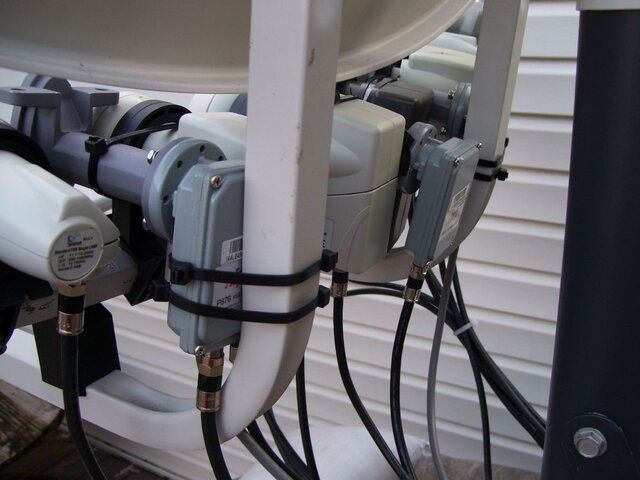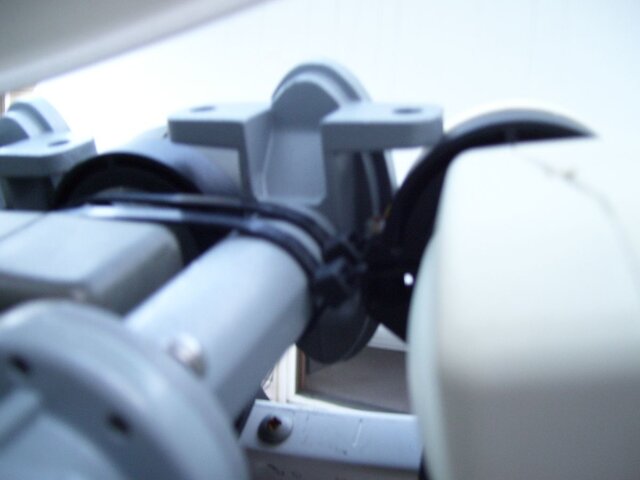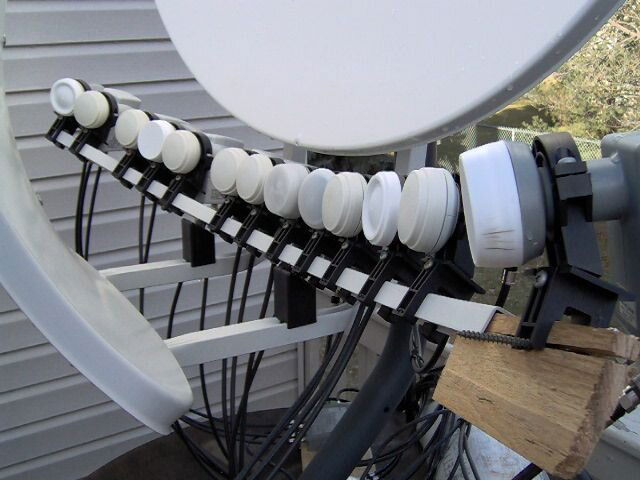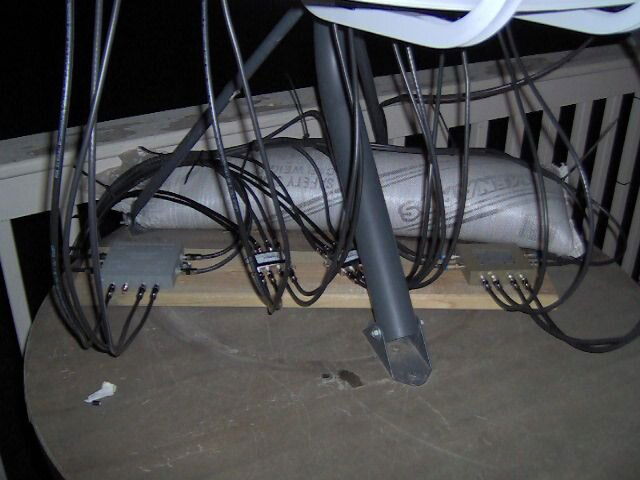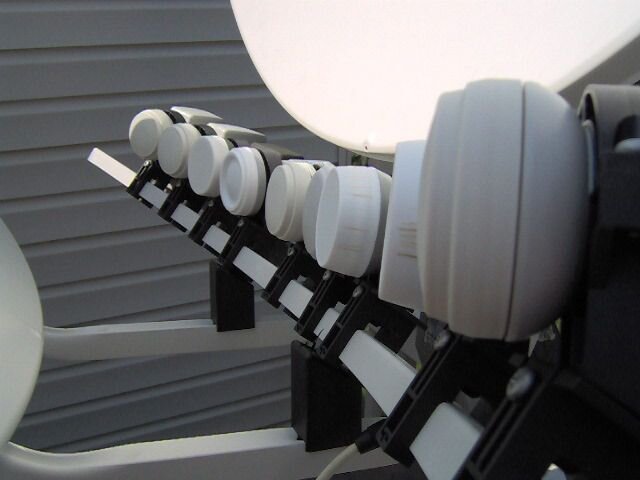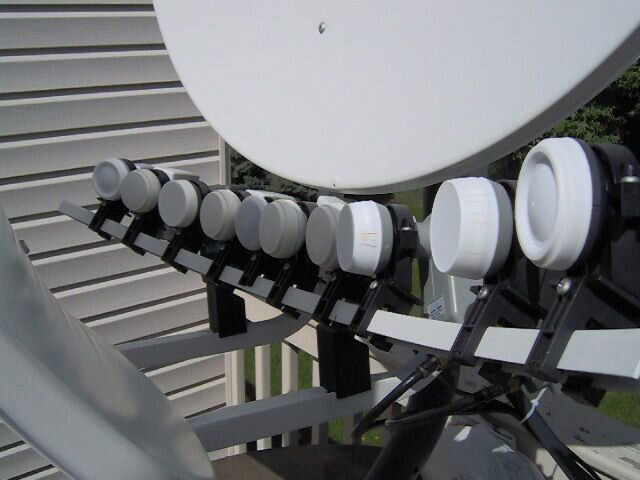1. They come with the wall mount bracket. The bracket on the back can be used for pole mount too
2. As previously mentioned the spacing can be a bugger if its less than three degrees. There are LNB's out there that are narrow so you can do 2 degrees. Monoblocks are JUNK...dont use them
3. you MAY get signals from both but its hit and miss (and the signals need to be strong). I could get 2 different sats but one was DBS which are higher powered then KU
4. yes
5. I never used anything because the dish was almost "straight up"
I haven't had my T90 dish in years but here is the review I did at the time (and a lot of the modifications I did with LNB's and such)
http://www.satelliteguys.us/xen/threads/wave-frontier-toroidal-t-90-satellite-dish.77005/
2. As previously mentioned the spacing can be a bugger if its less than three degrees. There are LNB's out there that are narrow so you can do 2 degrees. Monoblocks are JUNK...dont use them
3. you MAY get signals from both but its hit and miss (and the signals need to be strong). I could get 2 different sats but one was DBS which are higher powered then KU
4. yes
5. I never used anything because the dish was almost "straight up"
I haven't had my T90 dish in years but here is the review I did at the time (and a lot of the modifications I did with LNB's and such)
http://www.satelliteguys.us/xen/threads/wave-frontier-toroidal-t-90-satellite-dish.77005/













